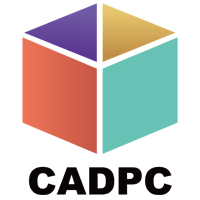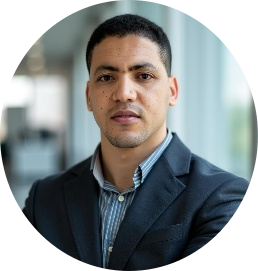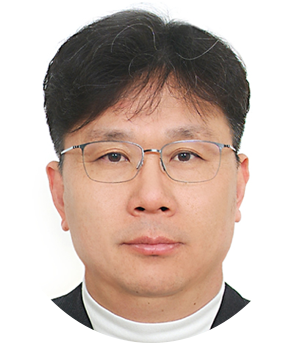
Speech Information

Assoc. Prof. Khairunisa Muthusamy
Universiti Malaysia Pahang, Malaysia
Speech Title: Reimagining Resources: Harnessing Waste for Durable and Sustainable Construction
Abstract: The construction industry faces dual challenges: addressing the environmental impact of traditional building materials and ensuring the long-term durability of infrastructure. These challenges are compounded by the global demand for sustainable practices and the need to reduce waste. This presentation explores innovative approaches to repurposing industrial by products and construction waste into durable construction materials, contributing to both environmental sustainability and the longevity of buildings. Utilizing materials such as discarded ceramic tiles and palm oil fuel ash in concrete production not only reduces landfill waste and conserves natural resources but also enhances the durability of concrete. For example, ground palm oil fuel ash serves as a partial cement replacement, improving resistance to chemical attacks and reducing permeability. Similarly, replacing natural river sand with recycled industrial waste enhances the structural integrity of concrete, contributing to longer lasting infrastructure. This presentation will provide insights into technical innovations, case studies, and the broader implications of waste utilization, inspiring international collaboration to advance sustainableconstruction practices. By fostering a circular economy, the construction sector can contribute to a cleaner environment and more resilient community.

Dr. Hamid Soleymani
City of Edmonton, Alberta, Canada
Speech Title: Future Technologies in Pavement Engineering
Abstract: Roads and pavements are critical assets and foundational infrastructure for modern cities. Despite significant advancements in pavement engineering, many agencies continue to face persistent challenges in addressing legacy requirements and implementing innovative solutions in this field.
Traditionally, road construction was regarded as a subset of civil engineering and later evolved into a subset of geotechnical engineering. Today, this discipline has expanded into the specialized field of pavement engineering, encompassing various subfields such as pavement design, analysis, materials, operations, maintenance, and management. As modern cities increasingly rely on safe and cost-effective road transportation, technological innovations—including embedded sensors, laser and ground-penetrating radar (GPR), laser scanning, and smart, autonomous construction equipment—are either being implemented or are poised to revolutionize the industry.
The future of pavement engineering is characterized by focusing on technological innovation, with Artificial Intelligence (AI) and data analytics anticipated to optimize construction processes and maintenance strategies. As road agencies increasingly shift their focus from building new infrastructure to maintaining existing assets, advanced evaluation techniques and smart pavement monitoring systems can conduct proactive maintenance and real-time performance monitoring. These advancements enhance the safety, resilience, and adaptability of transportation networks while addressing the challenges posed by aging infrastructure.
However, there are challenges to using these new technologies. These include limited budgets, resistance to change, and the need to train workers. Climate change is also making it more important to create infrastructure that is sustainable and can handle extreme weather. This means we need to move away from old methods and use new, technology-based solutions.

Dr. Jitendra Kumar Singh
Research and Development, Jindal Steel and Power, Angul, Odisha, India
Speech Title: Durability of Wastewater Reservoir Concrete and the Impact of Aluminum-Coated Pore-Sealing Agents on Corrosion Protection of Steel
Abstract: The corrosion behavior of 304 stainless steel (SS) and titanium (Ti) coatings, deposited via the arc thermal spray process, was evaluated in a pH 4 solution. The Ti-sprayed coating demonstrated a more uniform, less porous, and tightly adherent morphology compared to the SS-sprayed coating. Potentiodynamic analysis revealed that both coatings displayed passive tendencies due to the formation of corrosion products on SS samples and passive oxide films on the Ti-sprayed samples. Notably, the Ti coating reduced the corrosion rate by more than sixfold compared to the SS coating after 312 hours of exposure to sulfuric acid (H₂SO₄)-contaminated water at pH 4. Scanning electron microscope (SEM) images confirmed the formation of a uniform, globular passive film on the Ti coating, significantly enhancing corrosion resistance. In contrast, the SS coating exhibited a porous, net-like microstructure in its corrosion products. X-ray diffraction (XRD) analysis identified composite oxide films on the Ti coating and lepidocrocite (γ-FeOOH) on the SS-coated surface. The transformation of TiO and Ti₃O into TiO₂ (rutile and anatase) and Ti₃O₅ after 312 hours of exposure further highlighted the superior corrosion resistance of the Ti coating.
A novel method was employed to reduce the porosity of aluminum (Al) coatings applied via the arc thermal spray process, aiming to enhance their corrosion resistance in artificial ocean water. Porosity is an inherent characteristic of the arc thermal spray coating process. In this study, the Al coating was treated with varying concentrations of ammonium phosphate monobasic (NH₄H₂PO₄, AP) solution, then dried at room temperature and conditioned in a humidity chamber for seven days to deposit a uniform film. Corrosion resistance testing showed that phosphate ions effectively inhibited the corrosion of the Al coating. The treatment with AP resulted in the formation of ammonium aluminum hydrogen phosphate hydrate (AHP: (NH₄)₃Al₅H₆(PO₄)₈·18H₂O), which was nano-sized, crystalline, and uniformly distributed on the Al surface. Upon exposure to artificial ocean water, the AHP transformed into aluminum hydroxide phosphate hydrate (AHPH: Al₃(PO₄)₂(OH)₃(H₂O)₅), which exhibited a highly protective, adherent, uniform, and plate-like morphology. The sparingly soluble and strongly adherent AHPH layer significantly improved the corrosion resistance of the Al coating.

Dr. Stavros Sakellariou
Brunel University London, London, United Kingdom
Speech Title: Enhancing Spatial Resilience to Wildfires: Integrating Vulnerability, Human Impact, and Road Network Features into Spatial Planning
Abstract: Wildland fires, while natural phenomena, can cause severe damage to natural and cultural environments, particularly during high-severity events. This study aims to enhance wildfire resilience by developing optimized location plans for fire brigade vehicles within distinct administrative units. The added value lies in the fact that the optimized positions for initial attack consider both wildfire vulnerability and the impact of slope on travel time, providing a valuable tool for fire managers within each operational unit. Building upon previous research that examined a single plan for the entire study area, this study focuses on localized optimization by allocating resources specific to each administrative unit's boundaries and constraints. Key inputs include wildland fire vulnerability mapping, enriched with human impact on fire ignition. The impact of topography on travel time was thoroughly analyzed and incorporated into the optimization process. The results reveal that while two of the five operational units are adequately equipped, the remaining three are at high risk, with resources covering only half or less of their territories. This underscores the urgent need for additional resources in vulnerable areas. The methodology not only maximizes resource coverage but also highlights the critical role of spatial planning in enhancing resilience to wildfires. Hence, the outcomes may serve multiple stakeholders, such as first responders (fire brigade) for minimizing initial attack times in the most vulnerable areas; spatial planners for selecting optimal locations and types of firefighting infrastructure to enhance wildfire resilience; and infrastructure operators for coordinating immediate responses to wildfires, particularly those occurring at the borderlines of operational responsibilities.

Assoc. Prof. Hassane Lgaz
Hanyang University, Ansan, South Korea
Speech Title: Corrosion Challenges in Modern Concrete Structures: Underlying Mechanisms, Implications, and Protective Strategies
Abstract: Concrete corrosion poses a significant challenge to the durability and longevity of urban infrastructure, driven primarily by chloride ingress and carbonation. These two mechanisms, though distinct, share a profound ability to weaken structural integrity and reduce the service life of critical infrastructure. This keynote delves deeply into the science behind these processes, unraveling the mechanisms at play and their implications for concrete performance under various environmental conditions. Through an exploration of the chemical, physical, and environmental factors that accelerate corrosion, this presentation highlights the areas where research must be focused to better understand and mitigate these challenges. By fostering a deeper understanding of these mechanisms, the talk aims to inspire innovative approaches and guide future efforts in building resilient, sustainable urban infrastructure.

Prof. Yong Han Ahn
Hanyang University, Ansan, South Korea
Speech Title: Modular Building Strategies and Technologies for Housing Development
Abstract: “Modular building approaches are becoming increasingly familiar in the construction industry to address issues and challenges such as productivity decline, skilled worker shortages, safety concerns, etc. Modular building is a construction technique where a structure is built using prefabricated sections, known as modules, that are manufactured off-site in a controlled factory environment. These modules are then transported to the construction site and assembled into a complete building. My presentation will explain the importance of the modular building process and other key competency factors required to create a successful modular building. In addition, the keynote speech will demonstrate a few different high-rise modular projects in South Korea to illustrate how to create a more successful modular project in the built environment. Furthermore, I will not only explain the key benefits of modular building but also discuss some cautions and considerations. The presentation will also highlight the future direction of modular construction.”